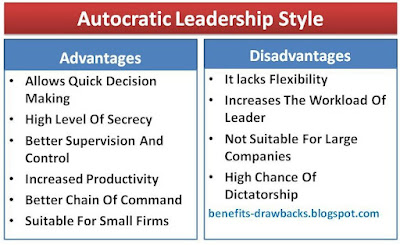What Is Decentralization ?
Decentralization is a type of organization set up in which authority and power is delegated to the middle and lower level management. It is just opposite of centralization where decision making authority is reserved in the top management. In this structure departmental heads, branch managers, section officers etc. can make routine decisions without consulting higher level managers. It is suitable for large sized and complex types of organizations because single management or authority cannot manage entire organizational activities.
Benefits Or Advantages Of Decentralization
Some of the notable advantages of decentralization can be expressed as follows:
1. Decreases The Workload Of Top Authorities
One of the main advantages of decentralization is that it reduces the work burden of top management because some of the managerial responsibilities, authority and power are delegated to the lower level authorities. So, it helps to minimize the load of top authorities.
2. Quick And Better Decision Making
In this type of organizational setup, decision making authority is delegated to the departmental heads who are closer to the level of operation. It helps to make quick and wise decisions. Prompt and better decision making helps to cope with the situation and solve the problems wisely and quickly.
3. Facilitates Specialization
Highly qualified, skilled, experienced and specialist personnel are appointed as middle and lower level managers to manage and control different branches, departments and units. So, decentralization brings specialization in the organization.
4. Suitable For
This organizational setup is appropriate for the following types of organizations:
* Having large volume of production
* Organizations with several functional units and departments
* Organizations having large number of staffs
* Large sized organizations with adequate resources
5. Increased Motivation And Satisfaction
It gives freedom to the middle and lower level managers and subordinates to make decisions. It helps to enhance skills, efficiency and potential of the subordinates. It provides the opportunity for growth and development. Therefore, decentralization increases motivation, morale and job satisfaction.
6. Increased Productivity
Because of specialization, increased motivation and high employee morale, it helps to improve employee performance and operational efficiency. Better performance and high efficiency leads to increase in the productivity of the organization.
7. Better Supervision And Control
In decentralization, subordinates and supervised and controlled by the concern managers or departmental heads. Lower level managers have full authority to monitor and control their immediate subordinates. Therefore, it is possible to maintain better discipline and control in the decentralized organization.
Drawbacks Or Disadvantages Of Decentralization
Some of the major disadvantages of decentralization can be expressed as follows:
1. Complex And Expensive
This structure is more complex than centralization because of different branches, departments and different levels of management. It requires more capital and operational costs to manage decentralized organizations because of more operational activities, more employees and complex design. So, it is complex and expensive organizational setup.
Also Read:
Advantages And Disadvantages Of Centralization
Difference Between Centralization And Decentralization
2. Not Suitable
Decentralization is not appropriate for following types of organizations:
* Small organizations having limited volume of production
* Organization having less numbers of employees
* Organizations with less functional units
* Not suitable for specialized services
As we know that decision making power is delegated to the middle and lower level authorities in decentralization. If lower level managers are not capable of making wise decision, it may increase the risk of mismanagement and organization may have to bear huge loss.
4. Lack Of Coordination
Another disadvantage of decentralization is poor coordination. It is very difficult to maintain proper coordination between different functional areas and different levels of management because of its complexity. Due to the lack of coordination, there is a chance of conflict, misunderstanding and duplication of effort.
5. Communication Problem
Because of the coordination problem, it is difficult to establish better communication among departments, managers and subordinates in the organization. Lack of communication may create confusion in the workplace. Poor communication may hamper the efficiency and productivity of the firm.
Pros And Cons Of Decentralization In Short
Pros:
- It minimizes the burden of the top executives because responsibilities and roles are dispersed
- It promotes specialization, growth and diversification
- It is appropriate of large organizations with more resources and various operations
- It improves employee motivation and morale
- It facilitates prompt decision making
- It ensures the maintenance of better supervision, discipline and control
Cons:
- It is complex and costly structure
- It is not suitable for small firms with limited activities and resources
- It lacks proper coordination
- There is a possibility of conflict, misunderstanding and communication problem in the organization
- It lacks uniformity
















